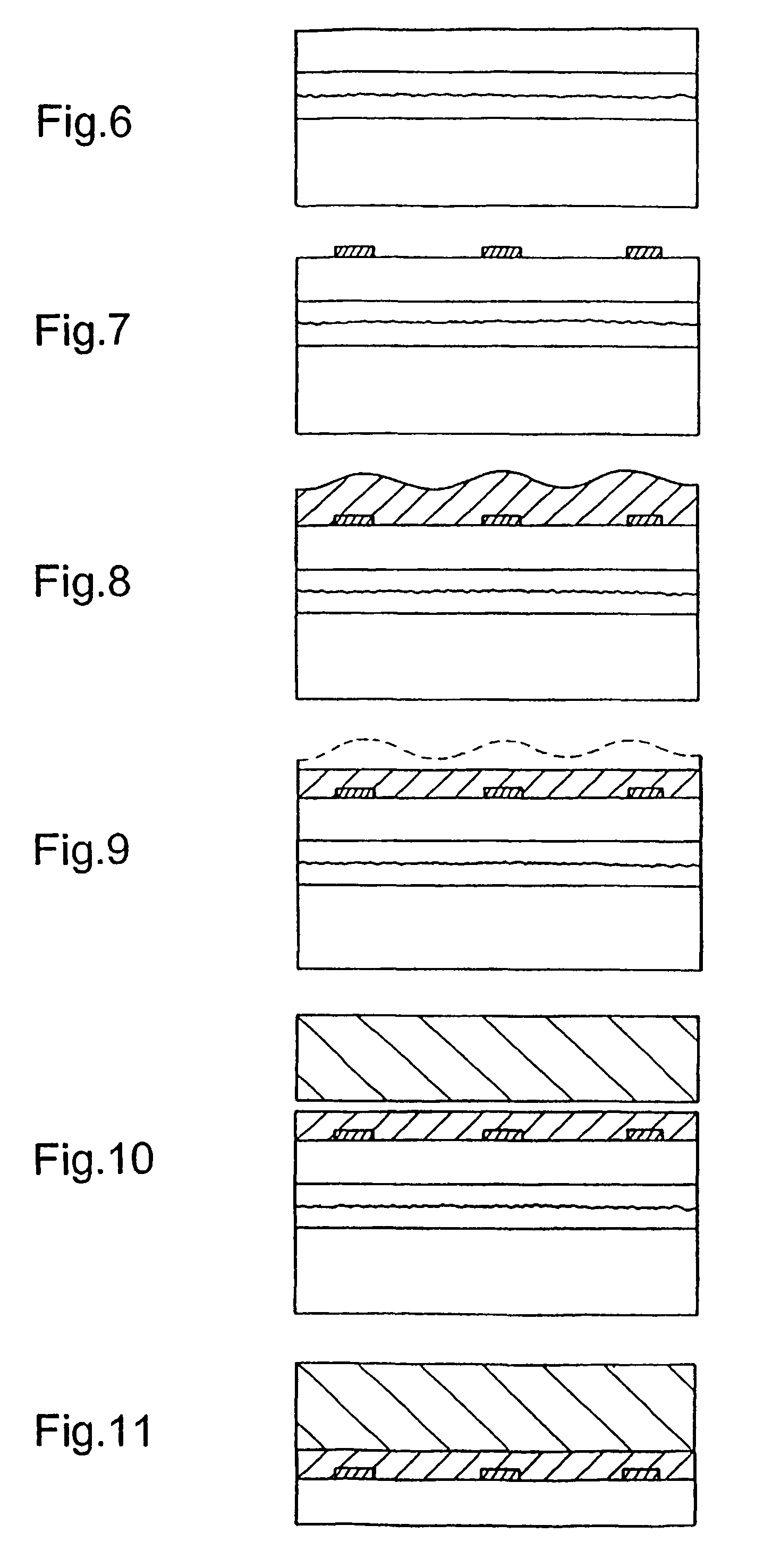Detachable substrate with controlled mechanical strength and method of producing same
a technology of mechanical strength and detachable substrates, which is applied in the direction of microstructural technology, electric devices, solid-state devices, etc., can solve the problems of excessive cost of original substrates that are beneficial for the production of components, inability to transfer to another support, and inability to meet the requirements of high-resistance substrates
- Summary
- Abstract
- Description
- Claims
- Application Information
AI Technical Summary
Benefits of technology
Problems solved by technology
Method used
Image
Examples
Embodiment Construction
roduction of components,
[0059]FIG. 14 is a view thereof during detachment by hydrofluoric acid etching and / or application of mechanical forces without transfer to a target substrate,
[0060]FIG. 15 is a view thereof after detachment into a final substrate and a substrate that can be recycled,
[0061]FIG. 16 is a variant of FIG. 13, after cutting trenches or notches between the components,
[0062]FIG. 17 is a view thereof showing a component being lifted off, for example after hydrofluoric acid etching,
[0063]FIG. 18 is a view analogous to FIG. 1,
[0064]FIG. 19 is a diagrammatic view in section of the FIG. 3 assembly after adhesive bonding of a transparent substrate,
[0065]FIG. 20 is a view of the upper portion of this assembly after lifting off and polishing,
[0066]FIG. 21 is a view of the upper portion of this assembly after lifting off and polishing,
[0067]FIG. 22 is an overall view analogous to that of FIG. 1, showing regions that are eliminated by chemical and mechanical cutting,
[0068]FIG....
PUM
| Property | Measurement | Unit |
|---|---|---|
| size | aaaaa | aaaaa |
| size | aaaaa | aaaaa |
| resistivity | aaaaa | aaaaa |
Abstract
Description
Claims
Application Information
 Login to View More
Login to View More - R&D
- Intellectual Property
- Life Sciences
- Materials
- Tech Scout
- Unparalleled Data Quality
- Higher Quality Content
- 60% Fewer Hallucinations
Browse by: Latest US Patents, China's latest patents, Technical Efficacy Thesaurus, Application Domain, Technology Topic, Popular Technical Reports.
© 2025 PatSnap. All rights reserved.Legal|Privacy policy|Modern Slavery Act Transparency Statement|Sitemap|About US| Contact US: help@patsnap.com



